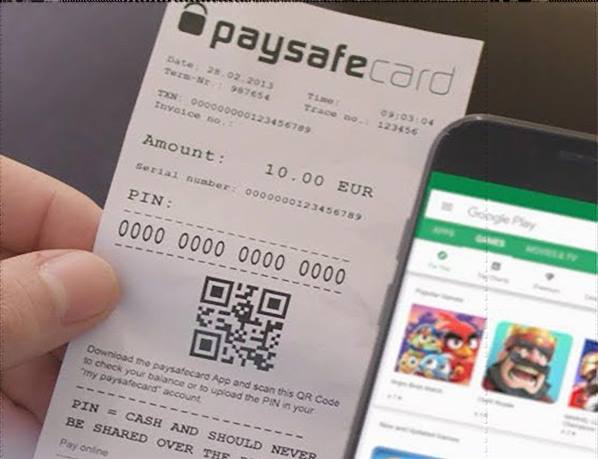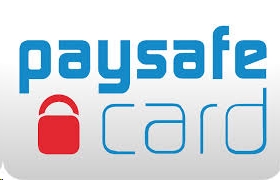
In today’s rapidly evolving business landscape, payment methods are crucial in shaping customer experiences and facilitating seamless transactions. One innovative solution that has gained significant traction is Paysafe cards. These versatile prepaid cards have emerged as a game-changer, bridging the gap between traditional payment methods and the digital era. In this article, we will delve deeper into the multifaceted role of Paysafe cards in businesses, exploring how they enhance accessibility, security, and international expansion while redefining the way companies engage with a diverse customer base. Whether you’re a small startup or a global enterprise, understanding the potential of Paysafecard USA could be the key to staying ahead in an ever-competitive market.
The Changing Landscape of Payments
The payment landscape has witnessed a profound transformation driven by technology and evolving consumer preferences. This shift is multifaceted and encompasses several key developments:
1. Digitalization and Mobile Payments: The widespread adoption of smartphones and the internet has made digital payments mainstream. Mobile wallets, payment apps, and contactless transactions have become the preferred method for many consumers. This digitalization offers convenience and allows businesses to access a broader customer base, transcending geographic boundaries.
2. Fintech Disruption: Fintech companies have disrupted the traditional financial sector by introducing innovative payment solutions. Startups offering peer-to-peer transfers, blockchain-based cryptocurrencies, and alternative lending platforms have gained popularity. This disruption has prompted traditional banks and financial institutions to adapt and innovate to remain competitive.
3. Cryptocurrencies: Cryptocurrencies like Bitcoin and Ethereum have emerged as a disruptive force in payments. They are gaining recognition not only as investment assets but also as viable payment methods. The decentralized nature of blockchain technology provides security, transparency, and reduced transaction costs, potentially revolutionizing cross-border payments and remittances.
4. COVID-19 Impact: The COVID-19 pandemic accelerated the shift toward contactless payments. Concerns over the transmission of physical currency led to a surge in the use of contactless cards, mobile wallets, and QR code-based payments. Consumers have grown more accustomed to the convenience and safety of these methods, prompting businesses to adapt and offer touchless payment options.
5. Business Adaptation: To thrive in this evolving landscape, businesses must embrace these changes. They should adopt new technologies and payment solutions to meet evolving customer expectations while ensuring the security and efficiency of their payment processes. There are also many Paysafecard-compatible betting services that you can use for placing bets. Staying up-to-date with the latest payment trends is crucial for remaining competitive in the marketplace.
The Advantages of Paysafecard for the Business
What’s Paysafecard? Paysafe cards offer several advantages for businesses, making them an attractive payment solution in various scenarios:
1. Expanded Customer Reach: Paysafe cards provide a payment option for customers who may not have access to traditional banking services or credit cards. This inclusivity can help businesses tap into a broader and more diverse customer base.
2. Reduced Risk of Chargebacks: According to authorities, unlike credit card payments, Paysafe cards are prepaid, which means there is no risk of chargebacks. It reduces the financial burden and administrative overhead associated with handling disputed transactions.
3. Enhanced Security: Paysafe cards are known for their security features, providing businesses and customers with peace of mind. They are not linked to personal bank accounts or sensitive financial information, reducing the risk of fraud and identity theft.
4. International Transactions: Paysafe cards can be used for international transactions, simplifying cross-border payments. It is particularly advantageous for businesses looking to expand their customer base globally without the complexities of currency conversion or international banking regulations.
5. Simple Fund Management: For businesses, Paysafe cards offer a straightforward way to manage funds. They can be used to allocate specific budgets for various purposes, such as employee expenses, marketing campaigns, or customer incentives.
6. Ease of Integration: Sources state that Paysafe cards are typically easy to integrate into various payment systems, including online platforms and point-of-sale (POS) systems. This seamless integration ensures a smooth payment experience for customers.
7. Customer Loyalty and Promotions: Businesses can use Paysafe cards as part of loyalty programs or promotional campaigns. They can offer these cards as rewards or incentives, encouraging repeat business and customer engagement.
8. Anonymity and Privacy: Some customers value the anonymity and privacy offered by Paysafe cards. Using these cards allows them to make purchases without revealing personal financial information, which can be particularly appealing for certain demographics.
9. Flexibility: How to use Paysafecard? Paysafe cards come in various denominations, allowing businesses to offer flexible payment options to customers. This flexibility can cater to a wide range of purchasing behaviors and budgets.
10. Compliance and Regulation: Paysafe cards often comply with industry regulations and can help businesses adhere to financial regulations and anti-money laundering (AML) requirements.
Making the Switch: How to Get Started with Paysafecard
Getting started with Paysafe cards involves several straightforward steps:
1. Research Paysafecard Availability: Check if Paysafe cards are available in your region. You can typically find this information on the official Paysafe website or by contacting local retailers or online distributors.
2. Create a Paysafe Account: While it’s not always necessary, creating a Paysafe account can help manage your Paysafe card transactions online. Visit the Paysafe website and sign up for an account if you wish to do so. You can find a complete tutorial at https://www.youtube.com/watch?v=l5czWp8L-UE
3. Find a Retailer or Online Vendor: Locate a retailer or an online vendor that sells Paysafe cards. Paysafe cards are commonly available at convenience stores, gas stations, supermarkets, and online retailers. You can also use the Paysafe website’s location finder to identify nearby retailers.
4. Choose the Denomination: Paysafe cards come in various denominations, so decide how much credit you need. Select a card that matches your desired amount.
5. Purchase the Paysafecard: Visit the retailer or online vendor and purchase the Paysafe card of your chosen denomination. If buying in person, you’ll receive a physical card with a unique PIN code. If you buy online, you’ll likely receive the PIN code electronically.
6. Activate the Card: If you buy a physical Paysafe card, it should be pre-activated. However, if you purchase an online code, you may need to activate it on the Paysafe website by entering the PIN code.
7. Use the Paysafecard: You can now use the Paysafe card for various online and in-store purchases. When making a payment, select Paysafe as the payment option and enter the PIN code from your card.
8. Check the Balance: You can check the remaining balance on your Paysafe card on the Paysafe website or through their mobile app if you have an account.
Remember that Paysafe cards are primarily designed for one-time or limited use, and some may have expiration dates. Always verify the terms and conditions of your specific Paysafe card to ensure you use it effectively.
Security and Privacy
Is a Paysafecard safe? Paysafe cards offer robust security and privacy features. Users appreciate the fact that these cards don’t require the disclosure of personal information, reducing the risk of identity theft. Each card is protected by a unique PIN, adding an extra layer of security. In case of loss or theft, the liability is generally limited to the card’s remaining balance, minimizing potential financial losses. Paysafe also employs advanced fraud protection measures to safeguard transactions.
Moreover, Paysafe cards provide a level of privacy that users highly value. They allow individuals to make purchases without revealing their identity or financial details, appealing to those who prioritize anonymity. Paysafe typically does not share users’ transaction data, enhancing privacy, and since these cards aren’t linked to bank accounts, financial activities remain separate and confidential. Overall, Paysafe cards offer individuals and businesses a secure and private payment option.
Future Prospects
The prospects of Paysafe cards are influenced by factors like ongoing technological developments, regulatory changes, and shifting consumer preferences. These prepaid cards may continue to grow in regions with limited access to traditional banking services and could potentially integrate with digital wallets for enhanced accessibility. As e-commerce expands, Paysafe cards may find increased utility in facilitating secure online transactions. To remain competitive, Paysafe cards may enhance security features and adapt to evolving regulatory requirements. However, they may also face competition from emerging digital currencies and the pressure to adopt more environmentally sustainable production practices. The future of Paysafe cards will depend on their ability to navigate these dynamics and cater to evolving market demands.

Bottom Line
In conclusion, Paysafe cards provide businesses with a versatile payment solution that combines security and convenience. They open doors to a wider customer base, reduce the risks associated with chargebacks, facilitate international transactions, and simplify fund management. Additionally, these cards can be leveraged for loyalty programs and promotions, enhancing customer engagement. As businesses adapt to changing payment trends, Paysafe cards offer a valuable tool to meet diverse customer preferences and navigate the evolving landscape, contributing to improved financial efficiency and customer satisfaction.




